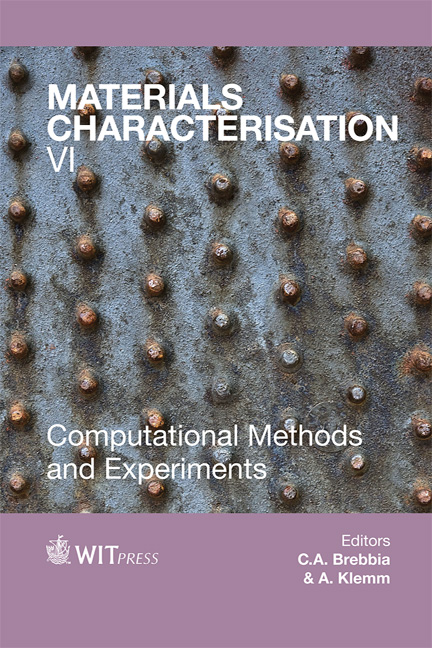Determination Of Frequency And Temperature Dependent Mechanical Material Properties By Means Of An Inverse Method
Price
Free (open access)
Transaction
Volume
77
Pages
12
Page Range
101 - 112
Published
2013
Size
1,094 kb
Paper DOI
10.2495/MC130091
Copyright
WIT Press
Author(s)
J. Ilg, S. J. Rupitsch & R. Lerch
Abstract
We present a method to determine the frequency as well as the temperature dependence of mechanical material parameters. In general, we apply a so-called Inverse Method that adapts simulation results to match the best possible measurements. The variable quantities within the simulation are the sought-after material parameters, namely the elasticity modulus, Poisson’s ratio, and a damping factor. Measurements are carried out by applying forced mechanical vibrations over a wide frequency range from quasi static up to more than 5 kHz. In particular, an electromechanical shaker harmonically excites tensile or bending vibrations of clamped plates and cylindrically shaped specimens. Two Laser Doppler vibrometers measure the vibration right next to the clamping and at the free end of the specimen, yielding a frequency dependent transfer function by relating the two measurands. Since the experimental setup is built up within an environmental chamber, temperatures from -40 to 150°C can be applied. Based on the experiment and the actual measuring points, a finite element (FE) analysis is performed to simulate the transfer function. Finally, the Inverse Method iteratively adapts the sought-after material parameters in such a convenient way that the simulated transfer function matches the measured one. The presented method was utilized to investigate the frequency and temperature dependence of different material classes: silicon rubber, plastics, metals, ceramics, and glass fibre reinforced plastics. In order to quantify and compare the dynamic material behaviour, functional relations of elasticity modulus/damping factor versus temperature are determined. Keywords: elasticity modulus, damping factor, forced vibration testing, frequency dependence, temperature dependence, mechanical material properties.
Keywords
elasticity modulus, damping factor, forced vibration testing, frequency dependence, temperature dependence, mechanical material properties





